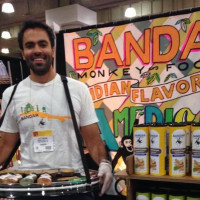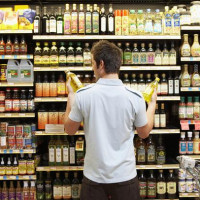Secret Sauce: 10 Tips for Getting Your Product into Whole Foods is a guest series by the founders of Bandar Foods. Follow along as Dan and Lalit share their tips and tricks for starting and growing a specialty food company.
“My Grandma makes the bestest pasta sauce and we want to get rich selling it. Can you help us?”
In last week’s post we tricked our friends into giving us honest feedback on our homemade food product idea. Everyone is still going nuts for Grandma’s Pasta Sauce, so let’s push forward with next steps. The next big question is to determine whether the product can be mass-produced.
Two quick caveats before we get started:
- There are many entrepreneurs who purposefully don’t want to scale their business. They want to keep their batches small and their distribution limited. Totally fine, but will be tough to grow into major markets like Whole Foods. These thoughts are intended for entrepreneurs who want to grow their business with demand.
- There are some entrepreneurs who are creating food items that require complex chemistry and need to be concocted in a lab. We don’t know much about creating fake eggs or soy that looks like meat. These thoughts are intended for entrepreneurs that who are looking to scale a homemade kitchen recipe.
2. Grandma’s a machine, but even she can’t make a thousand jars a day
The first step to scaling Grandma’s sauce is standardizing the recipe. Perhaps Grandma has the steps in her head and she doesn’t want to share. Sorry Grandma, that doesn’t fly – you need to thoroughly document the ingredients, measurements, and exact preparation steps in a spreadsheet. The purpose is to create consistency between batches, particularly while you increase the batch size. Doing this well requires close attention to detail and will take experimentation. For example, will the “dash” of salt needed when making a small pot of sauce translate to a cup or a 5lb bag when making a huge batch for 100 servings? Be specific and use ingredient weights (i.e. 1 tsp or 5 grams of salt) rather than more ambiguous terms that can be easily confused (i.e. dash of salt).
Note – recipes are easily stolen and there is not much legal protection in the event someone copies you. Keep this recipe secret and only share with a co-packer (described below) after you sign a confidentiality or non-compete agreement.
The next question is determining whether your product will be shelf-stable or perishable. There are many resources online to help you determine this including from the FDA and USDA. Simply stated, shelf-stable foods can be kept at room-temperature for a longer period of time (typically weeks or months) while perishable foods spoil faster and often need to be kept refrigerated. Scientifically, this can be tested by measuring pH, water balance, and the likely presence of microbes from the ingredients/process. You can hire a food scientist or submit samples to a food testing lab to figure this out. But the rule of thumb is typically that cooked food that’s packed while hot (in proper canning/jarring procedure) is more likely to be shelf-stable than uncooked foods.
We’ll discuss later market considerations for each – but this is worth figuring out now so you can better plan inventory. Shelf-stable is easier (as you don’t require a large refrigerator to store all the jars), but you might want to go fresh and keep the taste as bright as possible. Your call.
The final consideration is whether you will want to make this yourself or outsource to a third-party manufacturer. If you want to make yourself, you should find commercial kitchen space that follows proper health code procedures in order to sell widely. Additionally, commercial space provides access to larger working areas than your small kitchen, so its possible to create larger batch sizes. Maybe you have a friend who owns a restaurant and you can access the space after hours; or there’s a shared commissary kitchen where you can rent space? Without the need for a minimum batch size, this option is typically an affordable way to get started. Also enables you to have complete quality control over your product. However, this can be expensive down the line once you outgrow your current facility – but don’t worry about that yet. Just get started.
The option of working with a third-party manufacturer (also known as a co-packer, co-manufacturer, or private label manufacturer) is the other option. These are facilities, run by professionals, who specialize in sourcing ingredients, cooking product, packing, and labeling. Many of these facilities are run by very nice people who are willing to take a call to think through your product and whether they can help you produce. Obviously, a facility that already makes their own pasta sauce is more likely to help with Grandma’s recipe than one that only focuses on peanut butter.
There are many pros to working with a third-party manufacturer – primary allowing you to focus most of your time on sales, marketing, and running a business. However, it takes a lot of time to find the “right” co-packer for you. They might have a very high minimum order which is cost prohibitive; or they might not share your obsessive focus on quality. As this takes time, start Googling for local co-packers and make a few calls to see if they can help you.
Once you figure out production, you’re then going to want to slap a sweet label on the jar. Time to figure out your brand. This is typically one of the most fun and creative aspects of starting a food company – and we’ll dig in next week.







